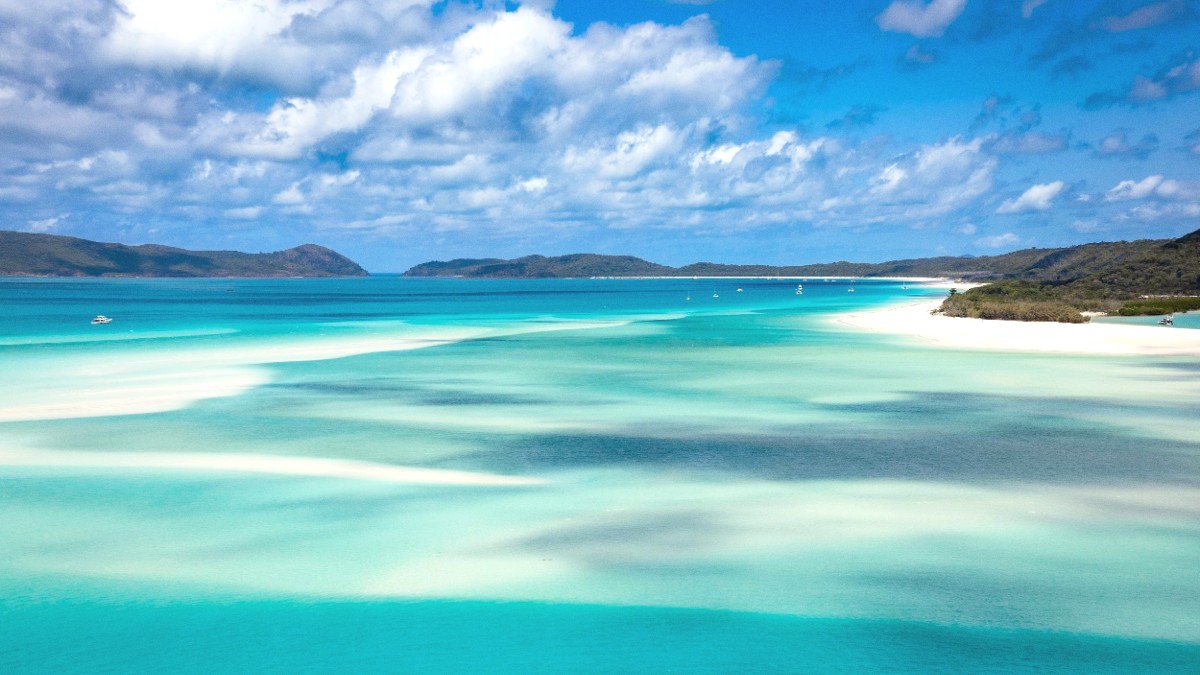
Queensland, Australia
From lively foreshores to tranquil natural spots, Airlie Beach invites travelers to discover its charms and the wonders surrounding it. This guide helps you plan a memorable visit to a place where natural beauty meets a friendly, laid-back atmosphere.
Airlie Beach sits on the mainland coast of Queensland, Australia. It forms part of the Whitsunday Region, a grouping of 74 continental and high islands lying just offshore in the Coral Sea.
The town is naturally sheltered by Conway National Park to the east and south, while the Whitsunday Passage to the north offers a calm channel for boats heading to the islands.
The coastline around Airlie Beach showcases numerous bays, inlets, and small, sandy beaches. The town center itself lies along a crescent-shaped bay, offering direct access to the Port of Airlie and Coral Sea Marina. These marinas serve as launchpads for most island and reef excursions.
Airlie Beach experiences a tropical climate, marked by distinct wet and dry seasons. This climate shapes the landscape, creating verdant green hills during the wet season and sun-drenched, clear skies during the dry months. The nearby islands rise dramatically from the sea, showing impressive peaks and dense vegetation.
Part of a grouping of 74 continental and high islands.
Nearest major service town, approximately 25 kilometers (15 miles) inland.
Residential areas in the hills offer stunning views of the Whitsunday Passage.
Much activity revolves around the ocean, with rainforests forming a backdrop.
Transition from marine adventures to rainforest walks within minutes.
The strategic location of Airlie Beach, nestled between mainland national parks and the island chain, makes it a desirable base for exploring the heart of the Great Barrier Reef.
The town itself sits on relatively flat land near the coast, but residential areas climb into the hills behind, offering stunning views. Walking is easy in the main commercial areas.
The distinct blend of coastal relaxation and accessible wilderness defines the region's appeal.
The land around Airlie Beach holds thousands of years of history, mainly as the traditional country of the Ngaro and Gia Aboriginal peoples. Evidence of their long occupation remains in rock art sites on some islands, a testament to their deep connection to this unique landscape.
European exploration of the Whitsunday region began in 1770 when Captain James Cook sailed through the passage on his voyage along Australia's east coast. He named the area "Whitsunday Passage" because he believed it was Whitsunday (Pentecost) when he passed through.
Thousands of years of Ngaro and Gia Aboriginal occupation, with rock art sites marking their connection to the land.
Captain James Cook explored the Whitsunday region in 1770, naming the passage during his voyage.
From timber and pastoral beginnings, Airlie Beach transformed into a major tourist hub in the latter 20th century.
The sheer beauty of the Whitsunday Islands and their proximity to the Great Barrier Reef made the area increasingly popular. As tourism grew, infrastructure developed, including marinas, accommodation, and tour operations.
Expect a warm, humid climate for much of the year, offering conditions for water activities.
The main street and foreshore area pulse with activity, presenting dining, bars, and tour operators.
The Whitsunday Islands, including Whitehaven Beach, and the fringing reefs of the Great Barrier Reef.